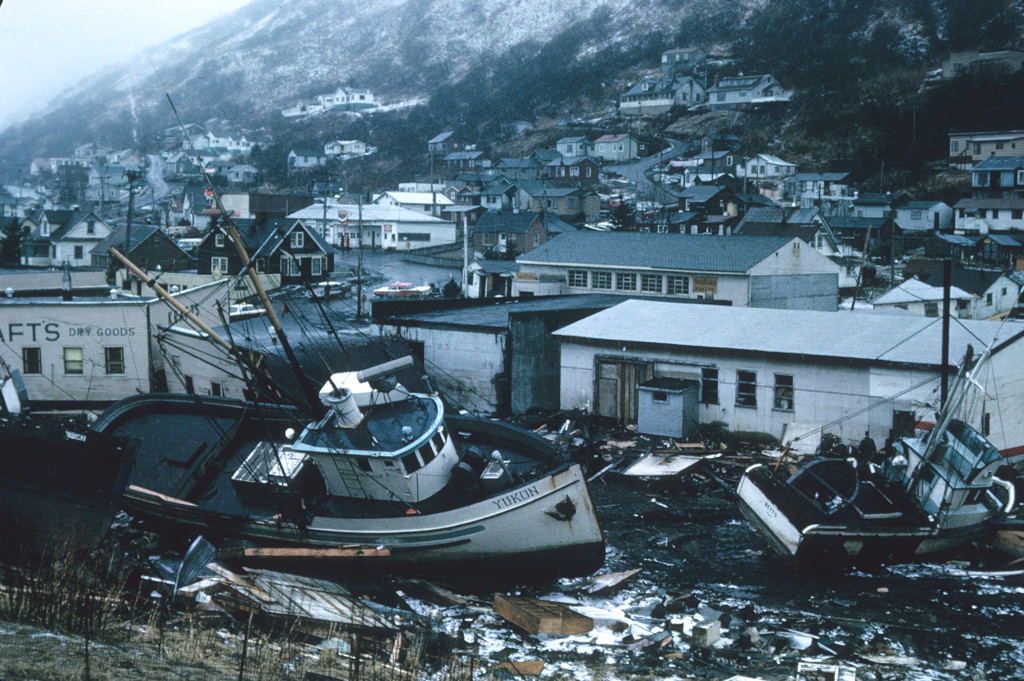1964 M9.2 Great Alaska Earthquake
The Great Alaska Earthquake of 27 March 1964 generated the most destructive tsunami ever observed in North America. The major tectonic tsunami, which was produced by displacement of the ocean floor between the trench and the coastline, caused fatalities and great damage in Alaska, Hawaii, and the west coast of the United States and Canada. Of the 131 fatalities associated with this earthquake, 122 were caused by tsunami waves. In addition to the tectonic tsunami waves, more than 20 local tsunamis were generated by submarine and subaerial landslides in coastal Alaska. Local tsunamis caused most of the damage and accounted for 76% of tsunami fatalities. Also, they arrived almost immediately after the shaking was felt, leaving no time for warning or evacuation. Local waves were generated by submarine mass failures from the steep fjord walls, and also by other mechanisms, such as seiches and subaerial landslides.
The major tectonic tsunami was generated by vertical coseismic displacements that occurred over an area of about 285,000 square km in south-central Alaska. The uplift and subsidence of the sea floor due to the earthquake rupture process caused the displacement of the free water surface, and tsunami waves propagated away from the earthquake source area. The tectonic tsunami wave train affected the entire south-central coast of Alaska, but it was most damaging along the shores of the Kodiak group of islands and the Kenai Peninsula, the areas that subsided during the earthquake. The wave action lasted for about 11 hours after the earthquake, and many communities were inundated by 7 to 10 waves with periods from 30 to 90 minutes.
The regional Alaska Tsunami Warning Center was established in 1967 as a direct result of this earthquake in order to provide efficient tsunami warnings to the coastal areas of Alaska.

Seiches, a sort of sloshing of water back and forth in a small body of water like a boat harbor or swimming pool, were observed as far away as Louisiana where a number of fishing boats were sunk. Oscillations in the height of water in wells were reported from as far away as South Africa.
1964 Tsunami Animations
The 1964 tsunami propagation in the Pacific Ocean
Numerical simulation of tsunamis in Resurrection Bay from multiple underwater slides
Numerical simulation of a local tsunami resulting from an underwater slide in Seward
These animations as well as a playlist of tsunami related animations can be found on our YouTube channel.






